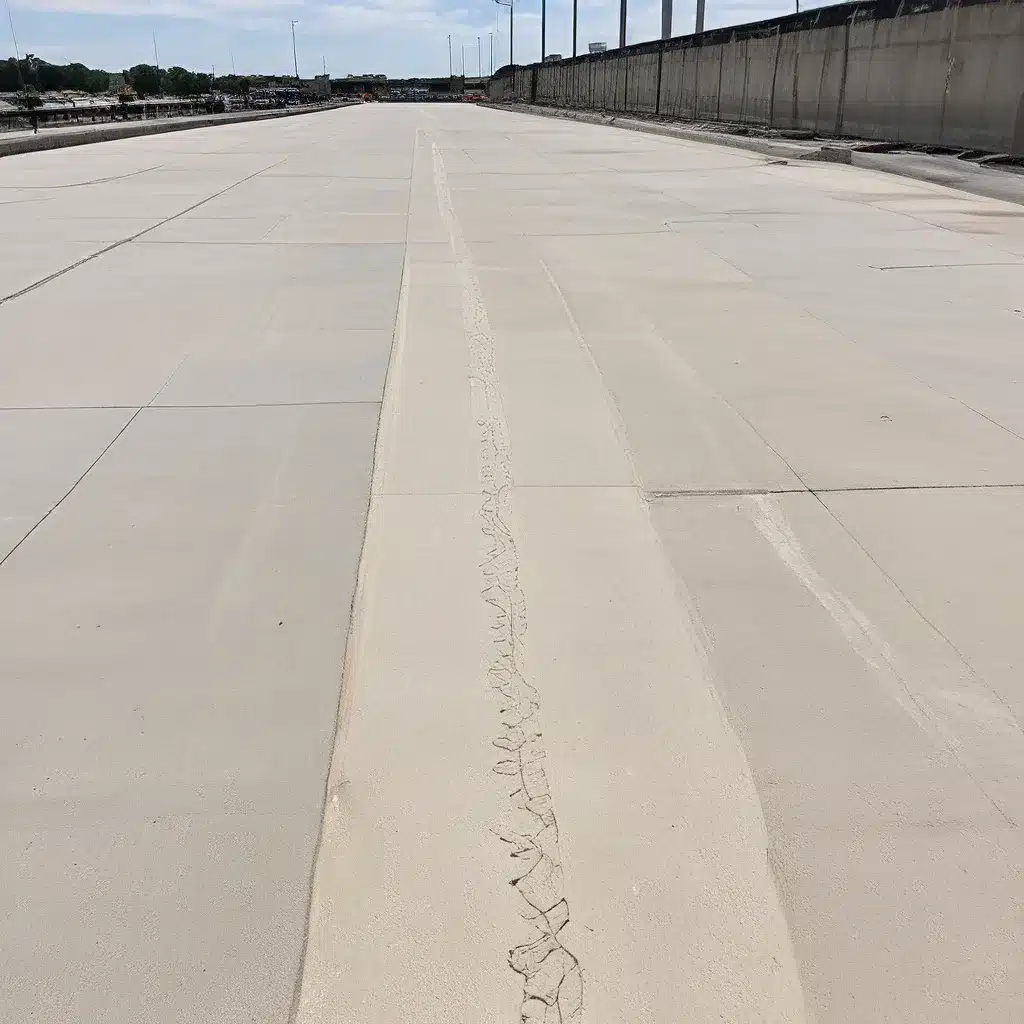
Protecting Your Concrete Investment: The Importance of Expansion Joints
As a concrete contractor serving the Kansas City metropolitan area, we understand the critical role that expansion joints play in the long-term durability and safety of concrete structures. Whether you’re building a new driveway, sidewalk, or commercial parking lot, proper installation and maintenance of expansion joints are essential to ensure your concrete investment stands the test of time.
Concrete is a remarkably strong and versatile material, but it’s not immune to the forces of nature. As temperatures fluctuate throughout the seasons, concrete expands and contracts, creating stress that can lead to cracking, spalling, and other forms of concrete failure if not properly managed. Expansion joints are designed to accommodate this natural movement, providing a flexible barrier that allows the concrete to move without compromising its structural integrity.
Choosing the Right Expansion Joint Material
When it comes to selecting the appropriate expansion joint material for your concrete project, there are several factors to consider. One popular option is asphalt-impregnated fiber expansion joints, such as SpecFlex, which are manufactured through a unique process that ensures superior asphalt distribution, enhanced product strength, flexibility, and excellent long-term aging characteristics.
These fiber expansion joints offer several key advantages:
- Versatility: They can be used in a wide range of concrete applications, including roadways, airport runways, sidewalks, warehouse flooring, driveways, parking lots, patios, and even against concrete forms, interrupting objects, or adjoining structures.
- Durability: The innovative manufacturing process and asphalt preservative provide superior long-term aging characteristics, ensuring the expansion joints maintain their flexibility and functionality for many years to come.
- Cost-Effectiveness: Asphalt-impregnated fiber expansion joints like SpecFlex offer a competitively priced, high-quality alternative to traditional fiber expansion joint materials.
Another option to consider for larger expansion gaps or seismic applications is the SJS Seismic Joint System, which is designed to accommodate the unique movement and stress requirements of roadways, airport runways, sidewalks, and other critical infrastructure projects.
Proper Installation and Maintenance of Expansion Joints
Regardless of the specific expansion joint material you choose, proper installation is crucial to ensuring its long-term effectiveness. When installing expansion joints, it’s essential to follow the manufacturer’s instructions carefully, ensuring the joints are properly sized, aligned, and secured to the surrounding concrete.
One common mistake made by DIY enthusiasts or inexperienced contractors is failing to properly prepare the concrete surfaces before installing the expansion joints. Neglecting to clean and prepare the concrete can lead to poor adhesion, premature failure, and costly repairs down the line.
To maintain the integrity of your expansion joints over time, it’s important to regularly inspect them for signs of wear and tear, such as cracks, gaps, or deterioration. Depending on the level of foot or vehicle traffic, you may need to periodically reseal or replace the expansion joints to keep your concrete structures safe and functional.
Concrete Expansion Joint Maintenance Best Practices
Here are some best practices to help you maintain the effectiveness of your concrete expansion joints:
- Inspect Regularly: Conduct visual inspections of your expansion joints every 6-12 months, looking for signs of wear, cracking, or gaps.
- Clean and Prepare Surfaces: Before resealing or replacing expansion joints, thoroughly clean the concrete surfaces to ensure proper adhesion.
- Reseal as Needed: If you notice minor cracks or gaps, apply a high-quality sealant to help maintain the joint’s flexibility and prevent further deterioration.
- Replace Damaged Joints: For more significant damage, such as large gaps or severely cracked expansion joints, it’s best to replace the entire section to restore the concrete’s structural integrity.
- Consider Professional Assistance: For complex or large-scale concrete projects, it’s often wise to consult with a professional concrete contractor who can provide expert guidance on expansion joint selection, installation, and maintenance.
The Long-Term Benefits of Proper Expansion Joint Management
Investing in high-quality expansion joints and maintaining them diligently may require an upfront financial commitment, but the long-term benefits far outweigh the costs. By proactively managing your concrete expansion joints, you can:
- Extend the Lifespan of Your Concrete Structures: Properly installed and maintained expansion joints help prevent cracks, spalling, and other forms of concrete failure, allowing your investment to last for decades.
- Enhance Safety: Concrete structures with well-functioning expansion joints are less prone to dangerous cracks or uneven surfaces that could pose tripping hazards.
- Reduce Repair and Maintenance Costs: Addressing expansion joint issues early can help you avoid the need for costly concrete repairs or full replacement down the line.
- Maintain Curb Appeal: Keeping your concrete surfaces in top condition, free of unsightly cracks and deterioration, can enhance the overall aesthetic of your property.
Whether you’re a homeowner, business owner, or property manager in the Kansas City area, understanding the importance of concrete expansion joints and taking the necessary steps to ensure their proper installation and maintenance is a wise investment in the long-term health and value of your concrete structures.

